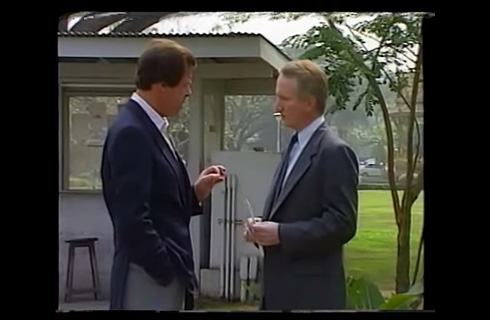BACKGROUND
“I see … a pile of skulls and bones. For the first time since my arrival, what I see before me is too painful, and I break down completely. These are my relatives, friends and neighbors, I keep thinking … It is a long time before I am calm again. And then I am able, with my bare hands, to rearrange the skulls and bones so that they are not scattered about.”
— Dith Pran
Perpetrator(s): The Khmer Rouge guerrilla movement and their party leader, Pol Pot.
Affected Group(s): Cambodians
1975-1979
Southeast Asia
When the Khmer Rouge took over Cambodia in 1975, Pol Pot began and extreme policy of collectivization and communal labor. Nationwide, Cambodians were forced from their homes. Those who were not able to make the journey, opposed the new regime, or refused to leave were killed. Children were separated from their parents into labor camps and citizens lost political and civil rights. In addition, they banned religion. The mass murder was influenced by the militant communists transformation with their extremist propaganda. Common reasons of death included speaking a foreign language, smiling, crying or wearing glasses. Those who survived were unpaid laborers. By 1978, over two million civilian deaths were recorded. The data collected in 1983 show that over three million people lost their lives under the Pol Pot regime.
When the Vietnamese invaded Cambodia the Khmer Rouge government lost its power. The Vietnamese occupation and the threat of the Khmer Rouge guerrilla forces ensured the underdeveloped and prehistoric conditions to persist till 1989. The peace agreement in 1991 reinstated Buddhism as the official state religion and in 1993 the first true democratic elections took place.
Further Research:
• http://genocidewatch.net
• http://worldwithoutgenocide.org/genocides-and-conflicts/darfur-genocide
• http://www.preventgenocide.org
• http://endgenocide.org/learn/past-genocides/
• http://www.teachgenocide.org
• http://www.armenian-genocide.org/genocidefaq.html
• http://www.theforgotten.org/site/intro_eng.html
• http://www.genocide1915.info
• http://www.history.com/topics/armenian-genocide
• http://100years100facts.com/fact-category/armenian-genocide/
• http://www.unitedhumanrights.org/genocide/armenian_genocide.htm
• http://www.genocide-museum.am/eng/photos_of_armenian_genocide.php
Join LA2DC and Make an Impact
GET INVOLVED
